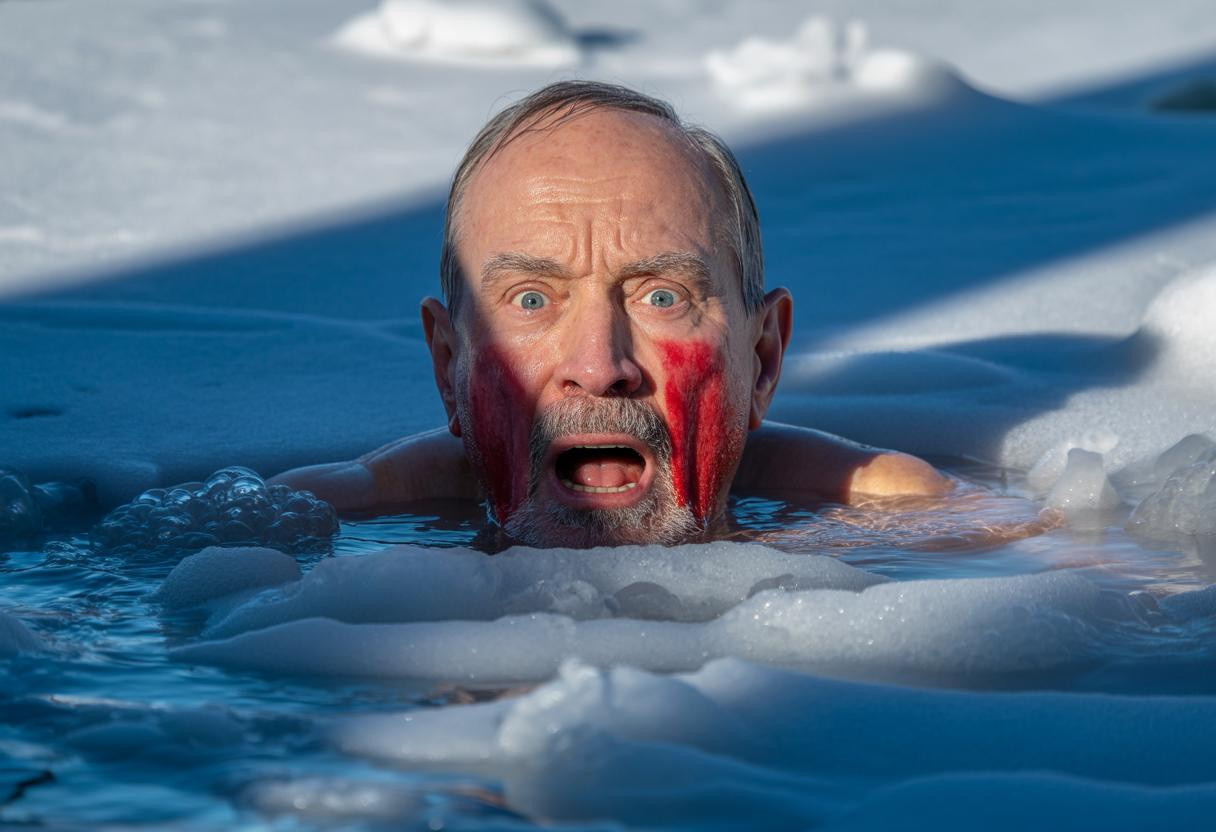Cold plunge therapy has become a viral wellness trend, but for seniors with cardiovascular conditions, this icy immersion could trigger deadly heart complications within seconds. Medical experts are now warning that the immediate shock response can increase blood pressure by 40 mmHg and heart rate beyond 100 bpm, creating a perfect storm for cardiac events in vulnerable populations.
The dangerous cardiovascular cascade triggered by cold immersion
When seniors with heart conditions enter cold water, their bodies initiate an immediate stress response that overwhelms aging cardiovascular systems. The sudden temperature drop causes instantaneous vasoconstriction, forcing the heart to work dramatically harder at the exact moment when blood vessels constrict.
This creates a dangerous mismatch between oxygen demand and supply. Age-related arterial stiffness in seniors makes this response even more severe, as their blood vessels cannot adapt quickly enough to the sudden pressure changes. The result is a cascade of physiological stress that can trigger arrhythmias, heart attacks, or strokes.
Research shows that even healthy individuals experience transient heart perfusion defects during cold exposure, but seniors with existing conditions face exponentially higher risks due to their compromised cardiovascular reserve.
Critical risk factors that make seniors vulnerable
Immediate cardiovascular complications
The cold shock response creates multiple simultaneous threats. Blood pressure can spike to dangerous levels within 15 seconds, while heart rate acceleration strains already compromised cardiac function. For seniors with pacemakers or irregular heartbeats, the electrical instability triggered by sympathetic nervous system overdrive can be life-threatening.
Temperature regulation becomes critically impaired with age. Seniors lose core body heat 25 times faster in cold water than in air, making hypothermia a serious risk even during brief exposures. This rapid heat loss compromises circulation and can trigger heart failure in those with existing conditions.
Hidden medical contraindications
Many seniors don’t realize their conditions make cold plunging extremely dangerous. Those with uncontrolled hypertension, recent heart attacks, severe aortic stenosis, or peripheral artery disease face immediate risks. Even seemingly minor conditions like night sweats and diabetes complications in seniors can compound the cardiovascular stress response.
Raynaud’s phenomenon and circulation disorders create additional complications, as cold-induced vasospasm can severely restrict blood flow to vital organs. The combination of these factors makes cold plunging a high-risk activity for many seniors.
Evidence-based alternatives for safe wellness practices
Instead of dangerous cold plunging, seniors can achieve similar benefits through safer methods. Contrast showers using alternating warm and cold water provide cardiovascular stimulation without extreme immersion risks. Starting with 30-second cold intervals followed by longer warm periods allows gradual adaptation.
Cold air therapy units offer another alternative, providing temperature exposure without immersion hypothermia risks. These devices allow controlled cooling while maintaining better physiological monitoring and safety protocols.
Just as preventing dangerous falls in seniors requires careful consideration of risk factors, cold therapy demands similar caution and professional guidance.
Smart implementation strategies for determined seniors
Essential medical screening
Before considering any cold therapy, seniors need comprehensive cardiovascular assessment including ECG, blood pressure monitoring, and cardiac history review. This screening should identify specific contraindications and establish individualized risk profiles.
Graduated exposure protocols
For low-risk seniors cleared by their physicians, extremely gradual progression is essential. Starting with water temperatures above 12°C and limiting exposure to 20-30 seconds can minimize shock response while allowing physiological adaptation.
Continuous monitoring during any cold exposure remains crucial, with immediate cessation protocols if blood pressure exceeds 180/120 mmHg or heart rate becomes irregular.
The future of safe thermal therapy for seniors
While cold plunge therapy continues gaining popularity, the medical community increasingly recognizes the need for age-specific safety guidelines. Future research must focus on identifying safe temperature and duration thresholds for seniors with various cardiovascular conditions.
Rather than pursuing potentially dangerous trends, seniors benefit more from evidence-based anti-aging approaches for seniors that prioritize safety alongside wellness benefits. The key is finding therapeutic interventions that enhance health without compromising cardiovascular stability.
